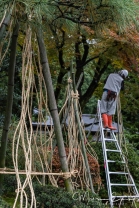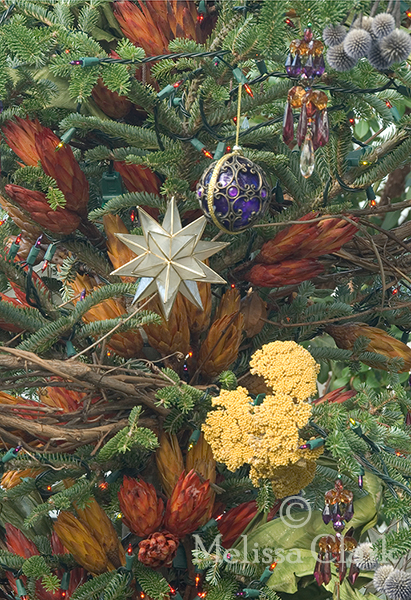Last year, I had the honor of becoming a docent (a volunteer museum tour guide) at the Smithsonian American Art Museum (which we fondly call SAAM) in DC. One of the first things I noticed about the building’s interior was the always picture-perfect plantings in the raised marble planting beds in the Kogod Courtyard.
Earlier this year, a group of SAAM docents took a field trip to the Suitland campus of Smithsonian Gardens. It used to be called the Horticultural Division, with its greenhouses located on Capitol Hill, but in 2010 the facilities were relocated to new buildings in suburban Maryland.
In addition to maintaining all of the plant material for the gardens, grounds, and horticultural exhibits throughout the Smithsonian Institution, the SG staff work regularly with SI landscape designers to come up with plans for what will be planted in the various garden areas surrounding each of the museums. (The Zoo has its own Horticultural Division.)
According to its website, every year the Production Section provides more than 100,000 annual bedding plants, 200 hanging baskets, and 2,000 poinsettias. Greenhouse Manager Vickie DiBella told us that plans have to be drawn up nine months in advance so the Propagation Division can grow the necessary annuals and perennials, either from seed or plugs. In the spring alone, over 20,000 annuals are needed for the garden areas, on and off the Mall. And in the fall the Tropical Division staff meet with the museums’ horticultural staff to see what will be needed over the winter.
Eighteen volunteers help augment the greenhouse facility staff of seventeen. In all, they are responsible for the divisions already mentioned but also the Butterfly Collection (for the exhibit at the Museum of Natural History), the Orchid Collection, an snow removal activities on the Suitland grounds.
Our group got a fascinating tour led by DiBella, the Greenhouse Manager. We covered a lot of ground and learned about how the SI Gardens staff and the various museums interact financially as well as in terms of planning displays. Each museum pays for plant material but not maintenance – except for my “home museum,” whose Kogod Courtyard is underwritten by SAAM and the National Portrait Gallery, which share the building space. By the end I was incredibly impressed by the work DiBella and her staff do – and looking forward to the 2019 Orchid Exhibit, which will be held at SAAM next winter.
For more information about the Smithsonian Garden Greenhouse facility, you can visit its location on the SI website here. And if you live in the DC area, they’d love to talk to you if you’re interested in volunteering!







































